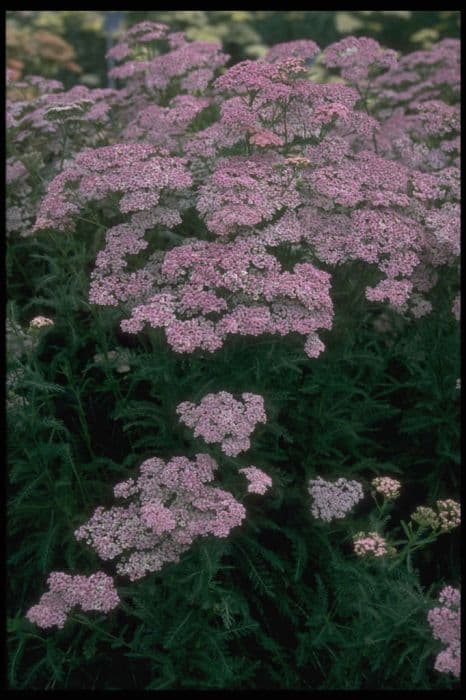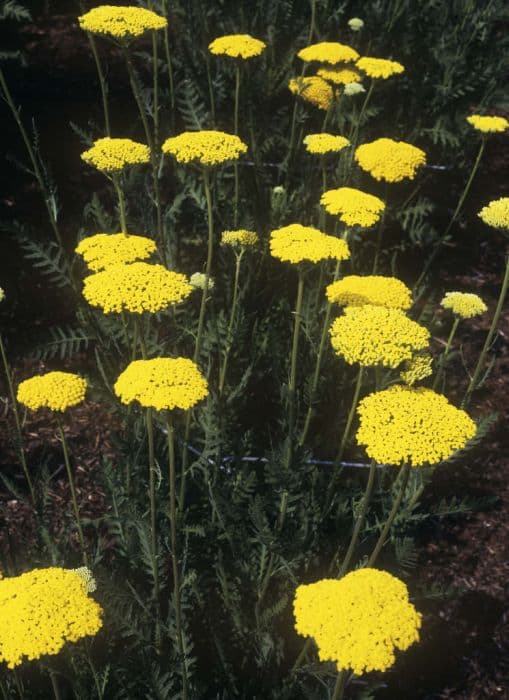Leopard Plant Ligularia fischeri

ABOUT
Ligularia fischeri, commonly known as leopard plant, is a visually striking plant distinguished by its lush foliage and attractive blooms. The leaves are typically large, heart or kidney-shaped, and have a vibrant green color that can make the plant a focal point in any garden setting. These leaves often possess a leathery texture and may have toothed edges, contributing to their ornate appearance. During the flowering season, the leopard plant produces tall bloom spikes that bear a multitude of small, daisy-like flowers. The flowers are usually bright yellow, clustered together in a way that creates an impressive display of color. These blooms are not only eye-catching but can also attract a variety of pollinators like bees and butterflies to the garden. The overall appearance of Ligularia fischeri is one of lushness and beauty, making it a popular choice for gardeners looking to add both foliage and floral interest to their landscapes.
About this plant
 Names
NamesFamily
Asteraceae
Synonyms
Fishers Ragwort, Fishers Ligularia, Fischer's Ligularia, Fischer's Senecio, Korean Ragwort
Common names
Cacalia hastata var. fischeri, Cacalia fischeri, Cacalia hastata, Ligularia tussilaginea, Ligularia tussilaginea var. fischeri, Senecillis fischeri, Senecio fischeri, Senecio hastatus f. fischeri, Tussilago fischeri.
 Toxicity
ToxicityTo humans
The plant known as Leopard Plant (Ligularia fischeri) contains a chemical called pyrrolizidine alkaloids, which can cause liver damage if ingested in large amounts. Poisoning symptoms might include jaundice, upset stomach, fatigue, hepatic veno-occlusive disease, and ultimately liver failure if consumed in large enough quantities. It is important to avoid ingesting any part of the plant to prevent these possible consequences.
To pets
Leopard Plant (Ligularia fischeri) is also toxic to pets due to the presence of pyrrolizidine alkaloids. Poisoning in pets can result in signs such as lethargy, vomiting, diarrhea, and in severe cases, liver failure due to hepatic veno-occlusive disease. It is crucial to prevent pets from consuming any part of the plant to avoid these harmful effects.
 Characteristics
CharacteristicsLife cycle
Perennials
Foliage type
Deciduous
Color of leaves
Green
Flower color
Yellow
Height
2-3 feet (60-90 cm)
Spread
2 feet (60 cm)
Plant type
Herb
Hardiness zones
4
Native area
Korea
Benefits
 General Benefits
General Benefits- Decorative Appeal: Ligularia fischeri, commonly known as leopard plant, features large, ornamental leaves and daisy-like yellow flowers that can enhance the visual appeal of gardens and landscapes.
- Shade Tolerance: The leopard plant thrives in partial to full shade, making it an ideal choice for shaded garden areas where many other flowering plants may struggle to grow.
- Soil Erosion Control: With its substantial foliage and root system, the leopard plant can help in stabilizing soil and preventing erosion in garden settings.
- Moisture-Loving: It prefers wet conditions, which makes it suitable for planting in areas that are too moist for other plants, such as near ponds or in rain gardens.
- Wildlife Attraction: The bright flowers of the leopard plant can attract pollinators such as bees and butterflies, supporting local ecosystems.
- Low Maintenance: Leopard plant generally requires minimal care once established, making it a convenient choice for gardeners seeking low-maintenance landscaping options.
 Medical Properties
Medical Properties- Anti-inflammatory: Ligularia fischeri may possess anti-inflammatory properties useful in reducing inflammation.
- Hepatoprotective: It is believed to contribute to liver protection and may be beneficial for liver health.
- Antioxidant: This plant may have antioxidant effects, which can help protect the body from oxidative stress and free radical damage.
- Antimicrobial: There are indications that Ligularia fischeri has antimicrobial activity, which could help fight certain bacterial and fungal infections.
- Anticancer: Some studies suggest that substances in Ligularia fischeri might have anti-tumor properties, although this use is not well-established in mainstream medicine.
- Diuretic: It is sometimes used for its diuretic effects, promoting the excretion of urine.
- Immunomodulatory: There is some evidence that suggests the plant may have effects on the immune system, either by stimulating or suppressing its activity.
 Air-purifying Qualities
Air-purifying QualitiesThis plant is not specifically known for air purifying qualities.
 Other Uses
Other Uses- Garden Ornamental: Ligularia fischeri, commonly known as leopard plant, is often used as an ornamental in gardens due to its large, kidney-shaped leaves and bright yellow flowers.
- Companion Planting: The leopard plant can be used in companion planting to provide shade for more sensitive plants because of its sizable foliage.
- Natural Dye: The roots of the leopard plant may be boiled to produce a natural dye for fabrics or crafts.
- Erosion Control: Due to its robust root system, the leopard plant can help stabilize soil and prevent erosion on slopes or in areas prone to soil degradation.
- Ground Cover: Leopard plant can be utilized as a ground cover in shaded areas of a garden because it forms dense clumps that crowd out weeds.
- Frost Indicator: In colder climates, the leopard plant is sometimes used as a frost indicator because its leaves will wilt at the first sign of frost, alerting gardeners to protect sensitive plants.
- Dramatic Backdrops: Its striking foliage can create dramatic backdrops in floral arrangements or as a part of natural art installations.
- Photography: Its unique appearance makes Ligularia fischeri a popular subject for nature photographers looking to capture the diversity of plant life.
- Water Garden Plant: Because it enjoys moist conditions, the leopard plant is a good choice for the edges of a water garden or a pond where the soil remains damp.
- Pond Filtration: The leopard plant can be used in the creation of natural pond filtration systems, as their root networks can help filter out nutrients in the water that would otherwise lead to excessive algae growth.
Interesting Facts
 Feng Shui
Feng ShuiThe plant Ligularia is not used in Feng Shui practice.
 Zodiac Sign Compitability
Zodiac Sign CompitabilityThe plant Ligularia is not used in astrology practice.
 Plant Symbolism
Plant Symbolism- Determination - Ligularia fischeri, commonly known as leopard plant, features large, bold leaves which symbolize an individual's determination and ability to withstand various challenges in life.
- Resilience - The leopard plant thrives in shaded, moist environments, representing resilience and adaptation in difficult circumstances.
- Change and Adaptation - The changing nature of the leopard plant's flowers, which can look different depending on the angle and light, symbolizes the need to adapt to changing situations.
- Uniqueness - With its distinctive spotted foliage, the leopard plant signifies uniqueness and encourages embracing one's individuality.
- Transformation - As the leopard plant goes through a transformation when it blooms, it is associated with the concept of transformation and personal growth.
 Water
WaterThe Leopard Plant, which is the common name for Ligularia fischeri, prefers consistently moist soil, so it should be watered regularly. During the growing season in spring and summer, water the plant when the top inch of soil feels dry, which may be once or twice a week depending on weather conditions. Ensure each watering is thorough, allowing water to soak into the soil, providing about 1 gallon of water per week. In the fall and winter months, reduce watering as the plant's growth slows down. Overwatering or allowing the soil to remain soggy can lead to root rot, so it is essential to have well-draining soil.
 Light
LightThe Leopard Plant thrives best in partial to full shade, avoiding direct midday sun which can scorch the leaves. A spot under the canopy of open trees or on the north side of a building where it can receive filtered sunlight or gentle morning sun is ideal for Ligularia fischeri. Bright indirect light will help maintain its lush foliage and encourage blooming without the risk of leaf burn.
 Temperature
TemperatureLeopard Plants are hardy in zones 3 through 8, meaning they can withstand minimum temperatures down to -40 degrees Fahrenheit. Ideal growing temperatures for Ligularia fischeri are between 50 and 70 degrees Fahrenheit. They can survive temporary spikes above this range, but prolonged heat can stress the plant and trigger dormancy.
 Pruning
PruningPrune the Leopard Plant to remove spent flowers and dead or damaged leaves; this helps encourage new growth and improve the plant's appearance. The best time for pruning is in late fall or early spring. Aim to prune no more than one-third of the plant at a time to avoid stressing it. Deadheading after flowering can also promote a second bloom.
 Cleaning
CleaningAs needed
 Soil
SoilThe best soil mix for Leopard Plant (the most common name for Ligularia fischeri) is a well-draining, organically rich mixture with a slightly acidic to neutral pH of around 5.5 to 7. Incorporate peat moss, compost, and a small amount of sand or perlite to enhance drainage.
 Repotting
RepottingLeopard Plants should be repotted every 2-3 years to replenish the soil and allow for growth. Choose a pot just one size larger than the current one to prevent over-potting.
 Humidity & Misting
Humidity & MistingLeopard Plant thrives in high humidity conditions, ideally between 60-80%. Maintaining a high humidity level around the plant will mimic its natural habitat.
 Suitable locations
Suitable locationsIndoor
Keep in bright, indirect light and high humidity.
Outdoor
Plant in partial shade with moisture-retentive soil.
Hardiness zone
3-8 USDA
 Life cycle
Life cycleLigularia fischeri, also known as Fischer's Ligularia, begins its life cycle as a seed, typically germinating in the spring when temperatures become suitable. Once sprouted, it develops into a rosette of leaves at ground level, where it undergoes vegetative growth. As the plant matures, it produces stalks with large, attractive heart-shaped leaves and clusters of yellow or orange daisy-like flowers in the summer. After pollination, typically by insects, the plant sets seeds which are then dispersed by wind, water, or animals, allowing for the propagation of the next generation. In autumn, the above-ground parts of the plant die back, while the root system remains dormant through the winter. The cycle begins anew with the return of favorable weather in spring, with the plant’s energy stored in its rhizomes enabling it to regenerate.
 Propogation
PropogationPropogation time
Spring to summer
Ligularia fischeri, commonly known as leopard plant, is often propagated through division, which is the most popular method for this species. The best time to propagate by division is in the spring, just as the plant awakens from dormancy and the new growth begins to emerge. To propagate leopard plant by division, carefully lift the entire plant out of the ground with a spade, preserving as much of the root ball as possible. Once it's out of the soil, use a sharp, clean knife or spade to cut the plant into sections, ensuring that each division has at least one shoot and a portion of the root system. Replant the divisions at the same depth they were growing at previously, spacing them approximately 12 to 18 inches (30 to 45 centimeters) apart to give them enough room to grow. Water the new divisions thoroughly to settle the soil around the roots and eliminate any air pockets. This method of propagation not only helps to rejuvenate older plants that may become crowded and less vigorous but also increases your collection of leopard plants.









